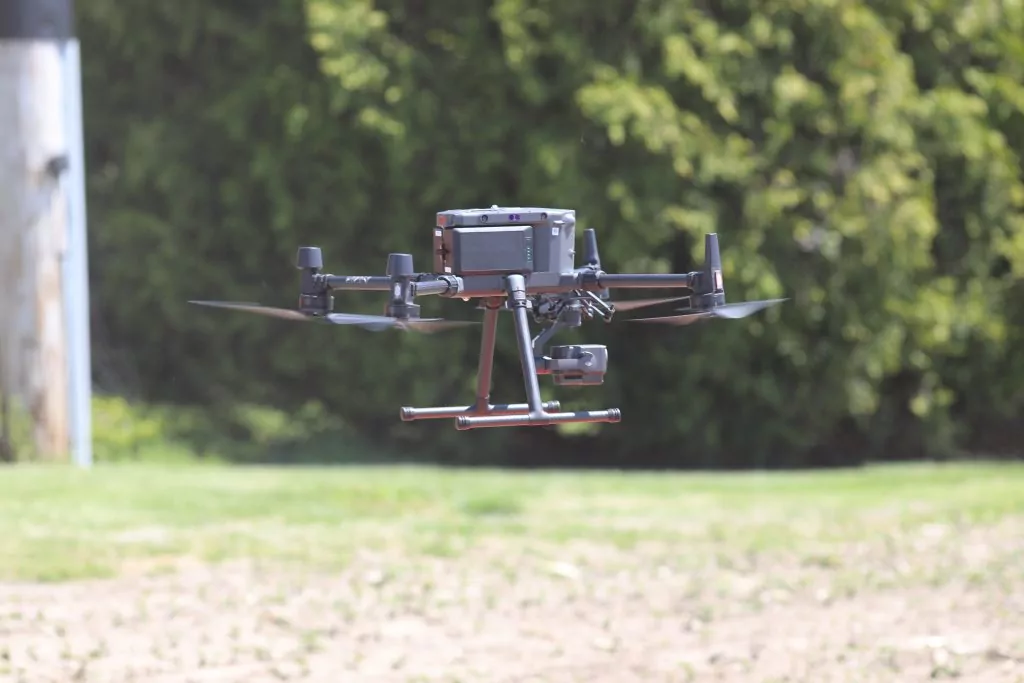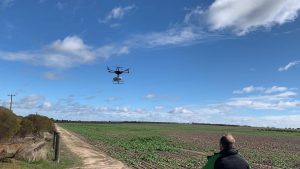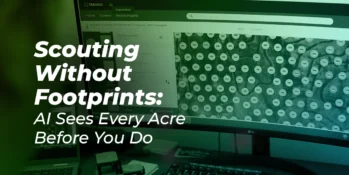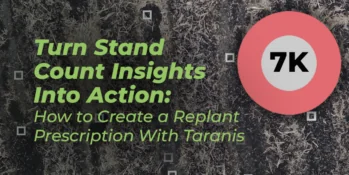

Spray drones are alleviating the pain points of crop spray applications, building job opportunities with small, rural businesses, and creating on-farm revenue for the next generation of farmers.
Scouting drones are strengthening relationships and delivering new and on-going management opportunities to farms across the country, taking the tedious and labor-intensive human-element out of crop scouting through advanced imaging.
 “Drones help agronomists scout more acres with more detail, more quickly, and with that information they can help farmers make faster, more accurate management decisions,” says Mike DiPaola, chief commercial officer for Taranis, who adds that those timely insights make a real difference in performance profitability.
“Drones help agronomists scout more acres with more detail, more quickly, and with that information they can help farmers make faster, more accurate management decisions,” says Mike DiPaola, chief commercial officer for Taranis, who adds that those timely insights make a real difference in performance profitability.
Since introducing high-resolution scouting as a service in the U.S. in 2020, Westfield, Indiana-based Taranis has helped to build relationships between farmers and their trusted advisors through drone technology.
Using a fleet of DJI Matrice 300 (M300) drones, the retail agronomists Taranis partners with can capture ultra-high-resolution imagery that provides a leaf-level view of any plant in the field. These images are then analyzed by Taranis’ AI platform that leverages machine learning and computer vision to identify actionable insights at scale. These insights not only deliver opportunity for in-season management, but a record of anomaly that a farmer can look back on in future years to assess and make management decisions.
“What happens when you have a picture and an understanding of the threats and the start that each field gets,” DiPaola asks. “Sure, it will make a farm more efficient and treatment more effective, but it’s deeper than that. When you have good information and good content to back it up, it brings people together, and that’s really what makes Taranis unique. We’re creating prosperity.”
The technology only needs the planting date and field boundaries and can collect data on thousands of acres daily. The imagery that is captured is so high-resolution, it can capture insects and insect damage on a single leaf and allow an agronomist to easily distinguish between a crop plant and weed to make better sense of NDVI imaging.
DiPaola says that Taranis delivers value to growers through unbiased, actionable insights, more efficient resource use, healthier crops that provide higher yield potential, and an overall better year-round planning opportunity. And that the artificial intelligence the company has developed is not only industry-leading but the unique piece of the service that truly delivers efficiency and economic benefit to farmers.
“What good are pictures if you can’t do anything with them?” he asks.
“The driving force behind Taranis is the marketplace to train artificial intelligence that was created. We use hundreds of agronomists worldwide to train our artificial intelligence, computer vision, and that means that of these millions of pictures taken over millions of acres, information is tagged and each insight is annotated so I can tell you how many plants are there, which weeds are there, how many plants are in defoliation and what nutrient deficiencies are present – that’s what the artificial intelligence platform does for farmers,” he says. “We have centimeter and sub-millimeter leaf-level capture every time we’re over a field.”
This article was featured in Seed World: https://seedworld.com/drones-provide-valuable-roi-in-the-field/.

Scouting used to mean walking fields and hoping to catch problems in time.

Sometimes, zooming in isn't enough. You need to step back to see the full picture. That’s where Wide Angle Weeds comes in.

Early-season emergence issues can derail yield potential—but they don’t have to. With Taranis stand count insights, you get a high-resolution, leaf-level view of every acre, making it easy to identify weak spots and take decisive action where it matters most.